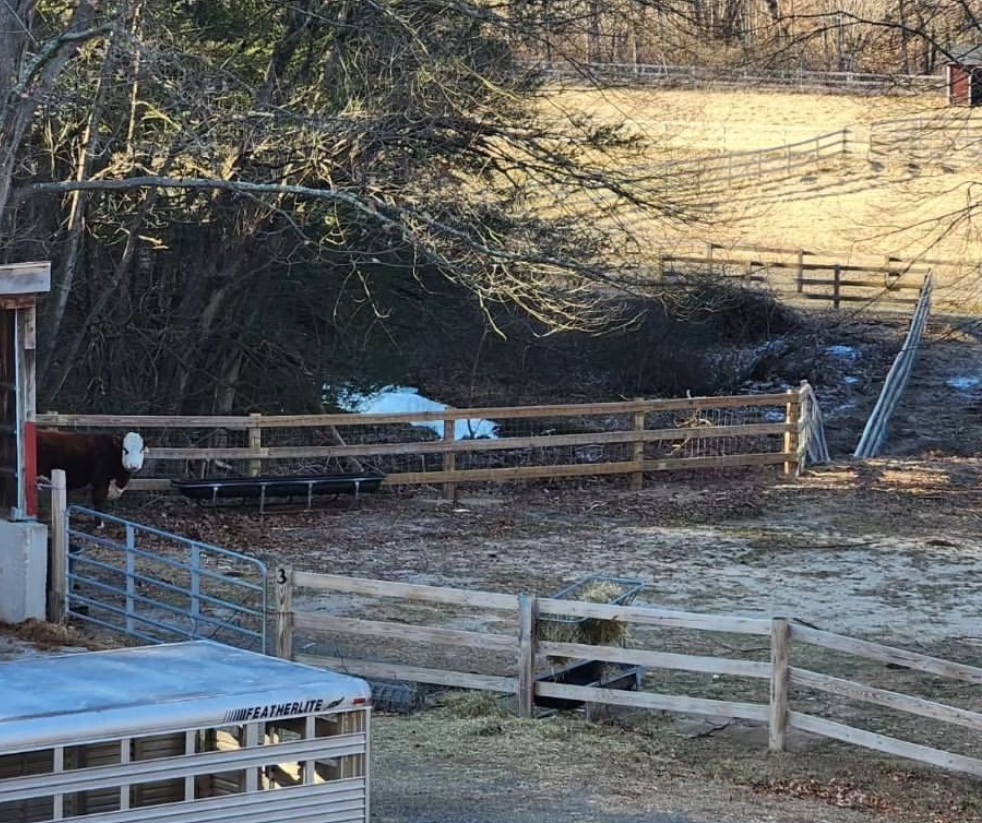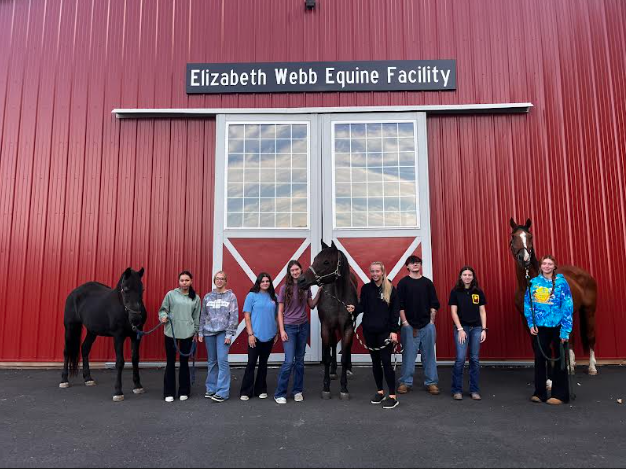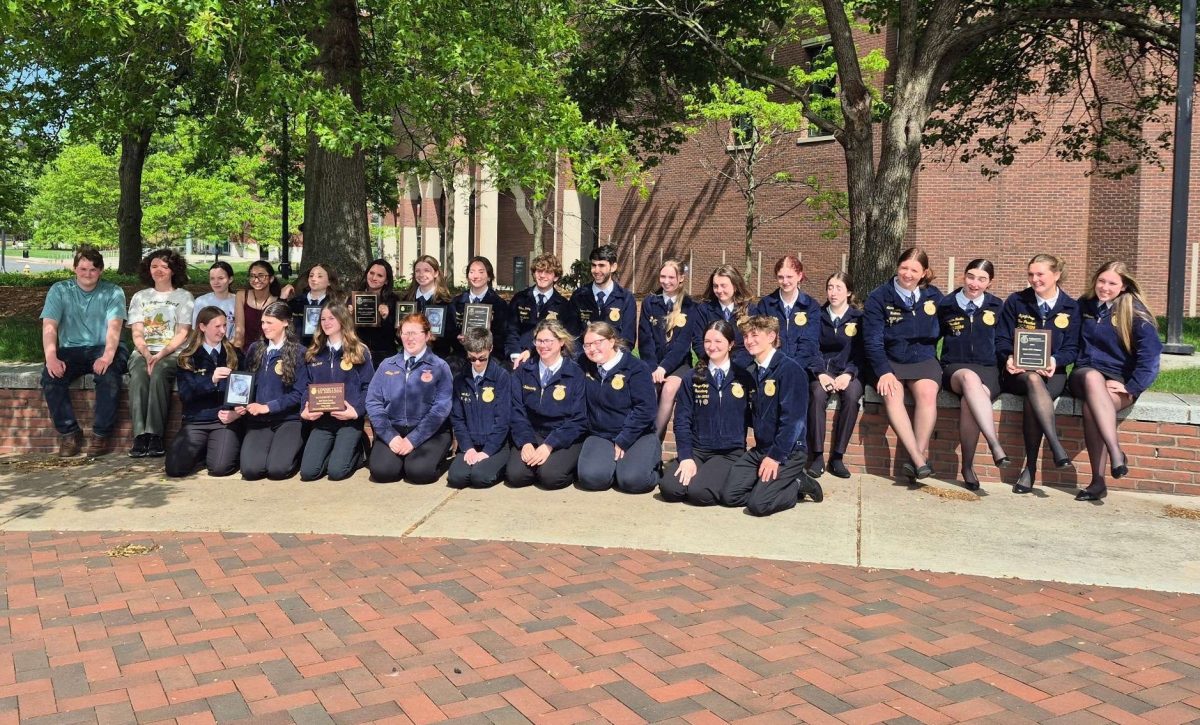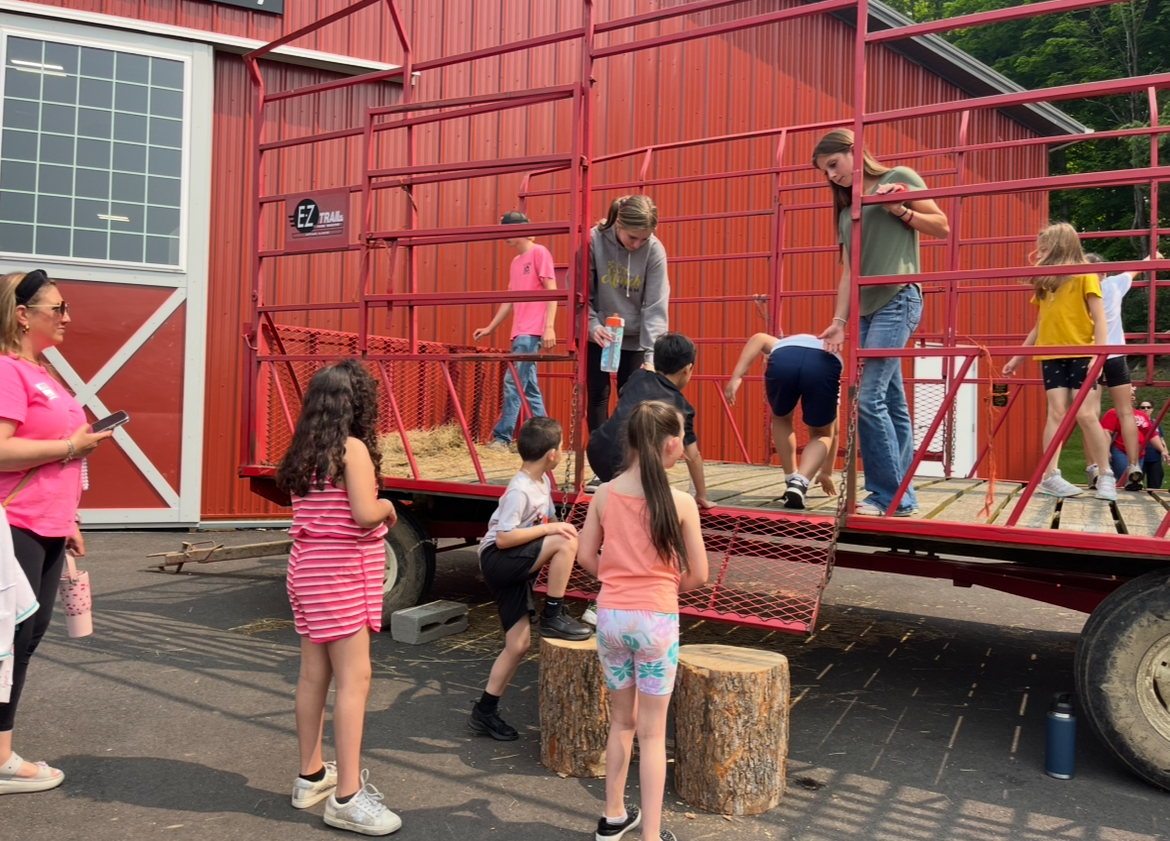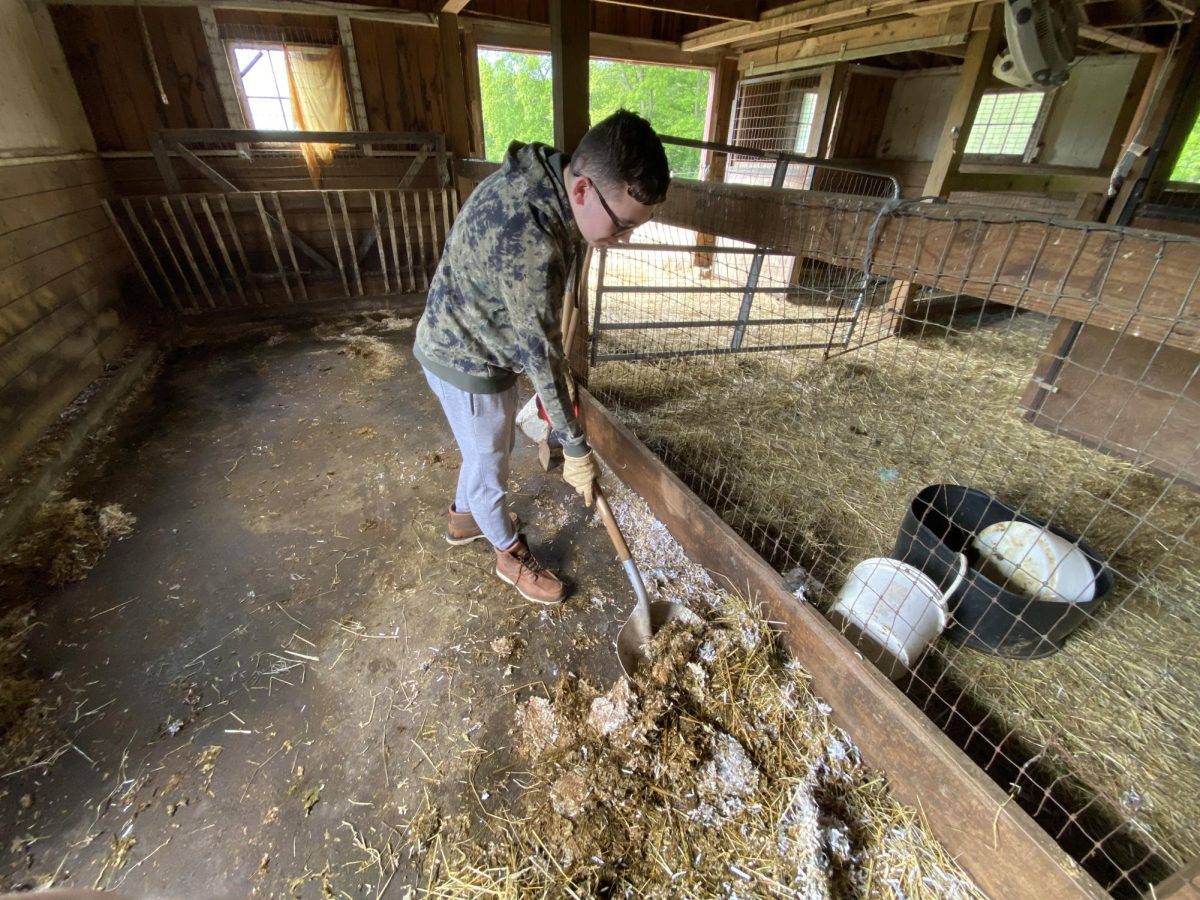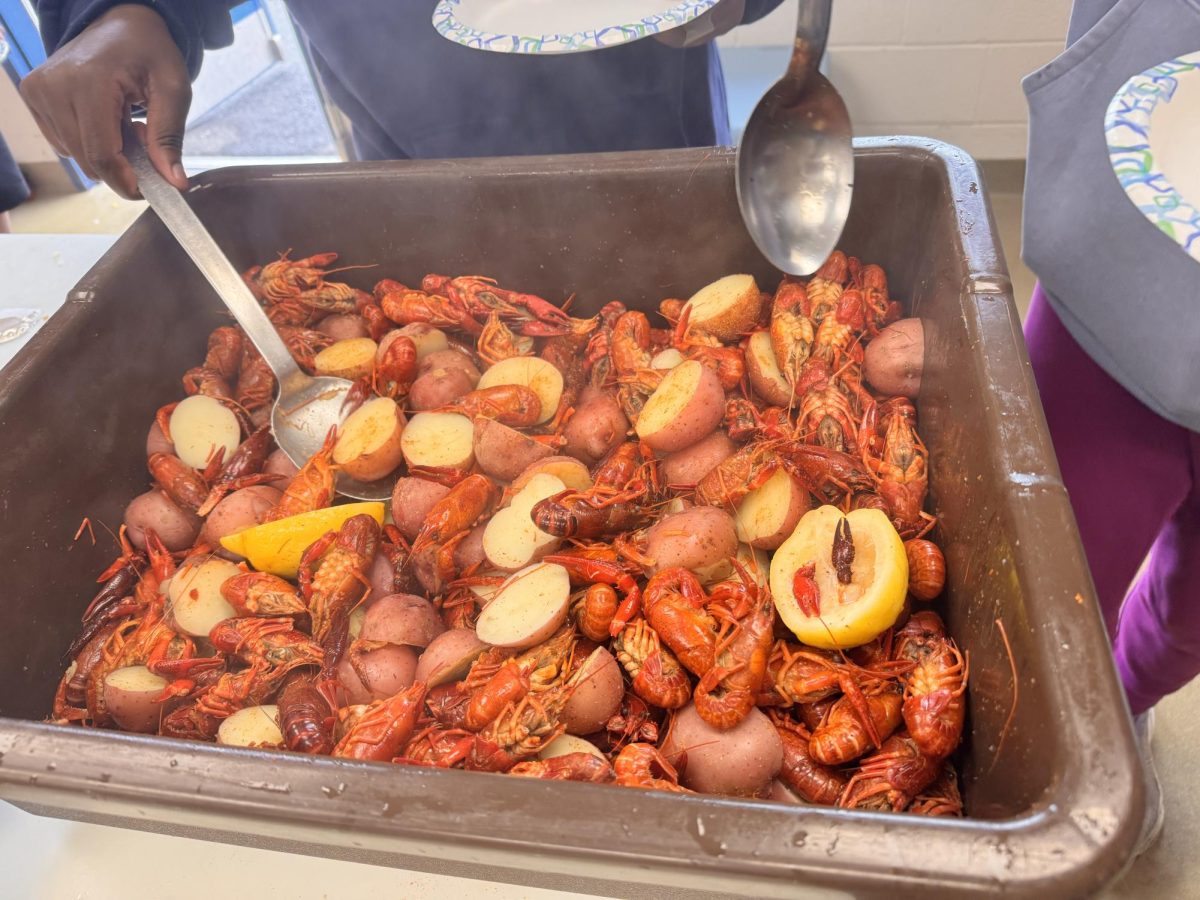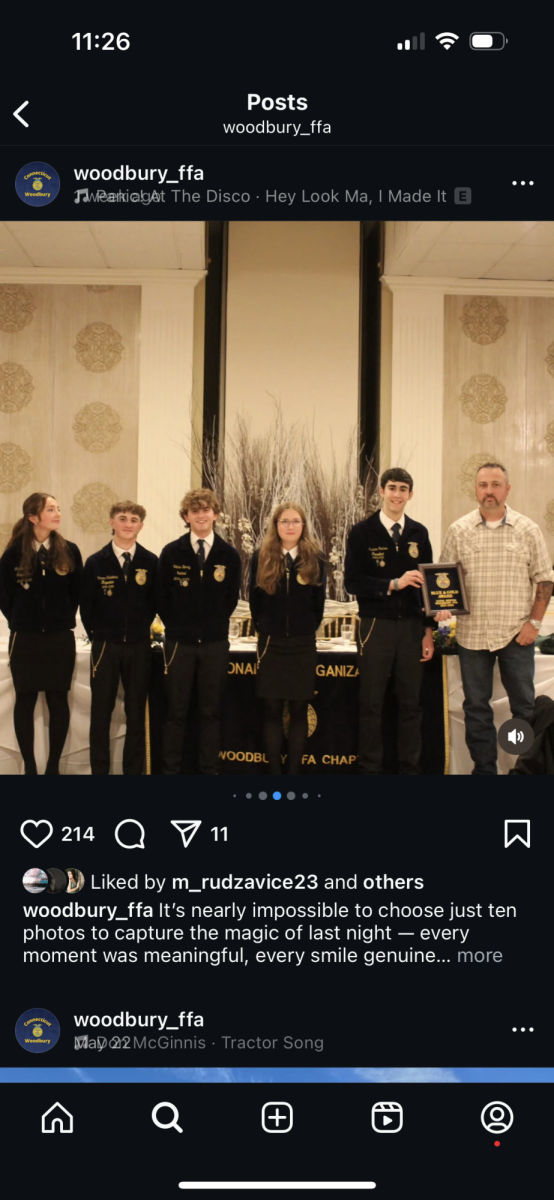WOODBURY — Between cold weather, harsh winds, and freezing temperatures, winters can become challenging with animals. The agriscience program at Nonnewaug is no exception to these conditions.
Katie Gorman, the livestock and animal science teacher, plans heavily for her students and animals during the winter. While maintaining their welfare is important all throughout the year, it is especially important during the winter. Between water buckets freezing, icy and snow-filled pastures, and colder temperatures it’s vital that the animals are properly taken care of.
This year plans look a little different for Gorman’s classes and animals.
Beginning right before winter break, Gorman’s classes worked hard to take out the old fencing surrounding the lower pastures. The fencing was put up in very little time and classes quickly got to work moving the animals.
“The old fencing could no longer safely house the animals,” said Gorman. “We replaced fencing because we needed new housing facilities and we needed a new actual fence line in order to safely house animals in the winter, but we also made the strategic choice to manipulate what we already had to make it more manageable and more efficient so we can spend more time with our animals and less time managing the small things with our animals.”
This was just the beginning of the efforts. While the main push for the new fencing was to make sure the animals could be safely housed, the concern for their well-being was also considered.
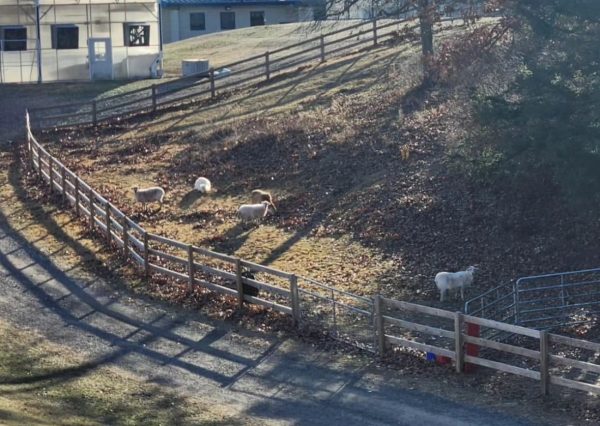
While the animals spent time down in the lower pasture, they were still cared for, but sometimes it was harder to reach them when it snowed or became too icy. Gorman did everything in her power to make sure that the animals were always cared for. The water buckets became a concern when temperatures started dropping and the top layer was freezing, over preventing animals from getting fresh water. This meant going down several times a day to break the ice.
The pathway leading to the pastures also became an issue when ice covered it and made it harder for students to reach the bottom.
The new fencing solves each of these problems and then some. In their new pasture, animals can be better observed and looked over when it’s cold. With their pasture being neck and neck with the barn, there are outlets that allow a heated water trough to be plugged in to prevent it from freezing over. This also makes it easier for water troughs to be filled as opposed to taking buckets from the stream to fill the trough. The walk to the animals is also much shorter now, and they are closer to everything else, like the barn, feed, hay supply, and human care.
During Gorman’s Period 4+5 class, students took time moving the animals from their pastures down below up to the newly fenced in pasture. It didn’t take long for the animals to adjust and quickly became acclimated with the new environment.
This hasn’t only helped out students in her classes but also one senior who has made it her responsibility to do the chores before school.
“The new fencing has made it easier to do chores because it has allowed me to do them faster,” said senior Samantha Kostka. “When the animals were down in the pastures, it was really hard to be able to transport water and fix the buckets if they were frozen. It’s easier to be able to have the buckets close to the barn so that I can fill them easily and not have to worry about them freezing.”




